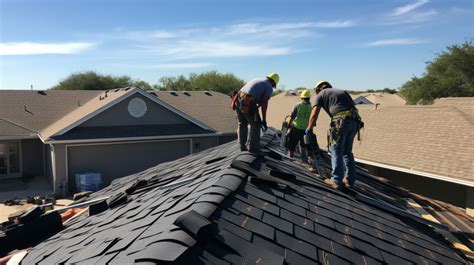Introduction
When it comes to home renovations, a new roof is among the most significant investments a homeowner can make. However, what if you could offset some of the costs with tax rebates? Understanding how to navigate potential tax savings can help you make a more informed decision about your roofing project. This article explores how homeowners can tap into tax rebates for a new roof while enhancing their home’s value and energy efficiency.
Understanding Tax Rebates for Roof Replacements
Tax rebates are financial incentives offered by various governmental entities that can help reduce the overall cost of home renovations, including roofing. These rebates can often be tied to energy-efficient upgrades that align with environmental initiatives. Homeowners looking to replace their roofs should be aware of these rebates and how to qualify for them.
Types of Tax Rebates Available
1. **Energy Efficiency Rebates**: Many states offer tax credits or rebates for installing energy-efficient roofing materials. This can include reflective roofing, metal roofing, or materials rated by the ENERGY STAR program.
2. **Local Incentives**: Check with your city or county for additional rebates that might not be widely publicized. Some local governments have their own programs to encourage home improvements that meet certain energy efficiency measures.
3. **Federal Tax Credits**: Sometimes, federal tax credits are available for home improvements focused on energy efficiency. Keep an eye on the IRS guidelines for any ongoing incentives.
Eligibility Requirements
Eligibility for tax rebates often varies based on location and specific program guidelines. Here are some typical requirements:
- Type of Material: The materials used for your roof must be energy-efficient. Make sure to look for certified products.
- Installation Standards: Some rebates require that the installation be performed by licensed professionals.
- Documentation: Keep all receipts and documentation to substantiate your claims for rebates.
- Home Occupancy: Many rebates apply only to primary residences, so rental properties may not qualify.
Steps to Unlock Your Tax Rebates
1. Research and Select Energy-Efficient Materials
Before beginning your roofing project, do thorough research on roofing materials that qualify for tax rebates. Look for products with Energy Star ratings or other certifications that prove their efficiency.
2. Consult with a Roofing Professional
Talk to a licensed roofing contractor who is aware of tax rebates and incentives. They can provide valuable insights into which materials to choose and how to properly document the installation for potential rebates.
3. Gather Documentation
Collect all pertinent documentation, including receipts, warranties, and certification of energy efficiency, to ensure a smooth rebate process.
4. File for Rebates
When tax season arrives, take advantage of the available credits and file your taxes accurately. Include all necessary documentation to substantiate your claims.
Conclusion
Investing in a new roof is not just about enhancing the aesthetics of your home; it’s also about improving its energy efficiency and financial viability. By taking the time to research and understand available tax rebates, homeowners can significantly offset the costs associated with their roofing projects. With this understanding, it’s possible to turn a major renovation into a savvy financial decision.
FAQs
1. How do I know if my new roof qualifies for tax rebates?
To qualify, the roofing materials must typically be energy-efficient. Look for products with ENERGY STAR ratings or check your local and state guidelines for specifics.
2. Can I claim tax rebates for a roof that I just replaced?
Tax rebates are often available for roofs replaced in the current tax year. Check the specific eligibility criteria for the rebates to see if your recent installation qualifies.
3. What forms do I need to file for tax rebates?
The forms you need will depend on the specific rebate and your location. Generally, you’ll need to keep receipts and fill out applicable tax credit forms, which can usually be found on government or IRS websites.
4. Are there any additional costs associated with claiming tax rebates?
There could be costs associated with acquiring necessary documentation or hiring professionals to ensure your roof qualifies for rebates. Make sure to calculate these costs into your overall savings.
5. What if I have questions during the process?
If you have questions, consult with a tax professional or a licensed roofing contractor who understands the specifics of tax credits and can guide you through the process effectively.
Download Tax Rebate For New Roof
